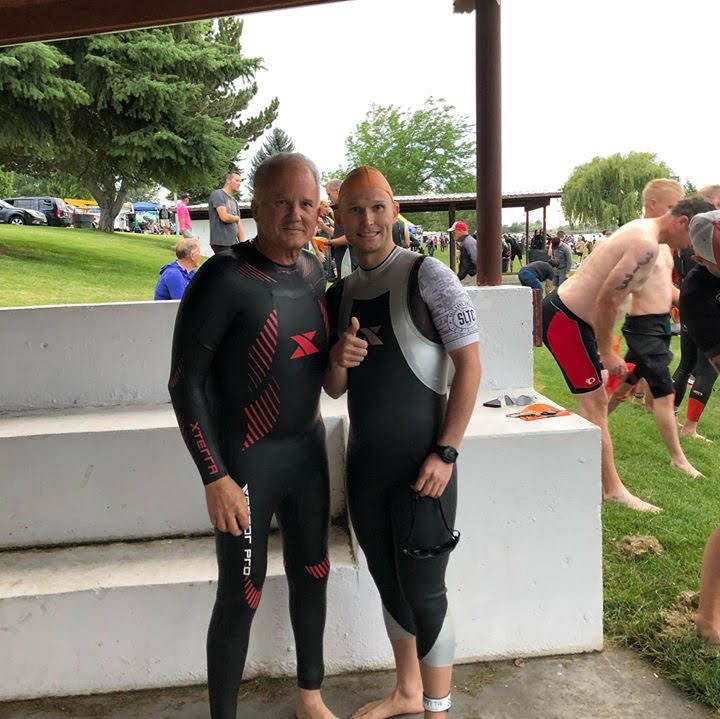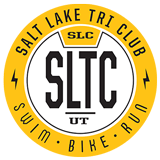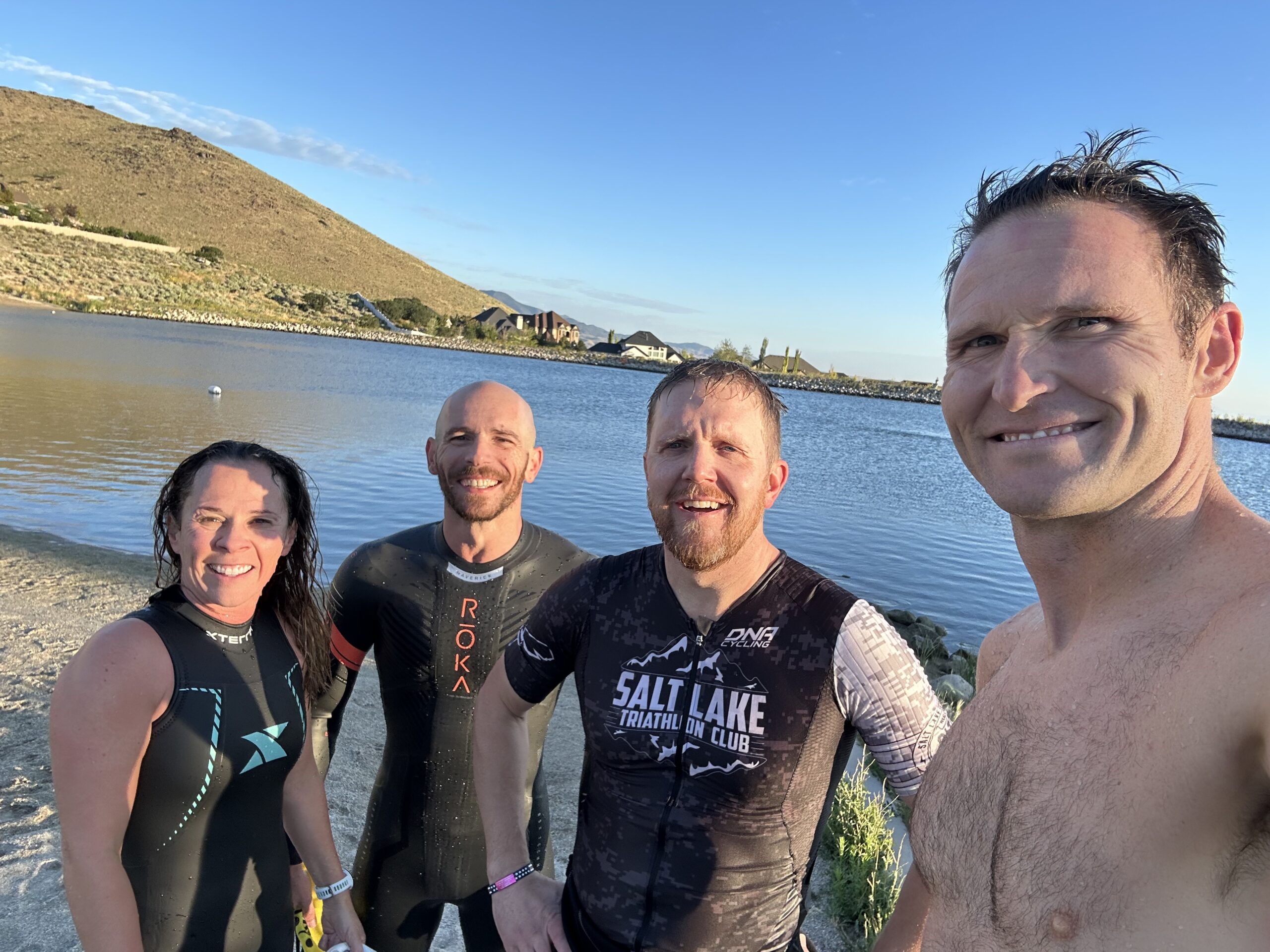Navigating the Waters: A Guide to Choosing Your Triathlon Wetsuit
By Rory Duckworth, Triathlon Coach
Hello, Salt Lake Triathlon Club members and fellow triathlon enthusiasts! As we gear up for another season of swimming, cycling, and running, I want to dive into a topic that’s crucial for your performance and comfort in the water: selecting the right triathlon wetsuit. Whether you’re a seasoned triathlete or a newcomer eager to make a splash, understanding what to look for in a wetsuit can significantly impact your swim leg. So, let’s navigate these waters together!

IRONMAN COEUR D’ALENE Swim with SLTC members
1. Understanding the Importance of a Good Wetsuit
A triathlon wetsuit isn’t just about staying warm in chilly waters; it’s a performance tool. The right wetsuit provides buoyancy, reduces drag, and can even improve your swimming efficiency. It’s about finding that second skin that supports your swim from the first stroke to the last.
2. Wetsuit Types: Full Sleeve, Sleeveless, or Shorty?
- Full Sleeve: Ideal for colder waters, offering maximum warmth and hydrodynamics. If you’re swimming in the often unpredictable conditions of the Great Salt Lake or similar bodies, this might be your go-to.
- Sleeveless: Offers more range of motion in the shoulders, which some swimmers prefer, and is a good middle-ground for slightly warmer conditions.
3. Material Matters: Neoprene Quality
Neoprene is the heart of your wetsuit. Higher quality neoprene is more flexible, more buoyant, and provides better insulation. Look for varying thicknesses in different suit areas — thicker around the core and hips for buoyancy, thinner at the joints for mobility.
4. Fit and Flexibility: Like a Second Skin
A well-fitting wetsuit is crucial. It should be snug but not restrictive, allowing full range of motion, especially in the shoulders. Remember, water seeping in and out of your suit can drastically reduce its effectiveness and your comfort.
5. Buoyancy and Range of Motion
Consider your swimming style. Do you need extra lift in your legs, or are you a balanced swimmer? Different suits offer varying buoyancy profiles to help keep you streamlined and efficient.
6. Transition Ease: Quick on, Quick off
In triathlon, every second counts, especially in transition. Look for features like quick-release zippers and flexible materials that make it easier to strip off your suit when you’re rushing to the bike.
7. Brand and Budget: Investing Wisely
From entry-level to top-of-the-line, there’s a wide range of wetsuits available. While the most expensive option isn’t always the best for everyone, consider it an investment in your training and performance. Reputable brands often offer the best in technology and durability.
8. Trying Before Buying
If possible, test different wetsuits. Some shops offer demo days or rental options. Feeling the suit in the water is the best way to know if it’s right for you.
9. Care and Maintenance
A good wetsuit is an investment. Rinse it with fresh water after each use, avoid direct sunlight when drying, and store it properly to extend its life.
10. Local Insights
Lastly, consider the local conditions where you’ll be training and competing. Salt Lake and surrounding areas can have specific challenges and temperatures. Talk to fellow club members about their experiences and what works for them.
In Conclusion:
Choosing the right triathlon wetsuit is a balance of personal preference, performance needs, and budget. As you prepare for your next race or training session, remember that a wetsuit is more than just gear; it’s a companion in the water, designed to help you swim your best.
I encourage all of you to share your wetsuit experiences and tips with each other. Together, we can all make informed decisions and elevate our performance. Here’s to a season of great swims, personal bests, and the perfect wetsuit fit!
Stay buoyant,
Coach Rory Duckworth, Salt Lake Triathlon Club

Coach Duckworth with his father, Brad Duckworth, before Spudman Triathlon




